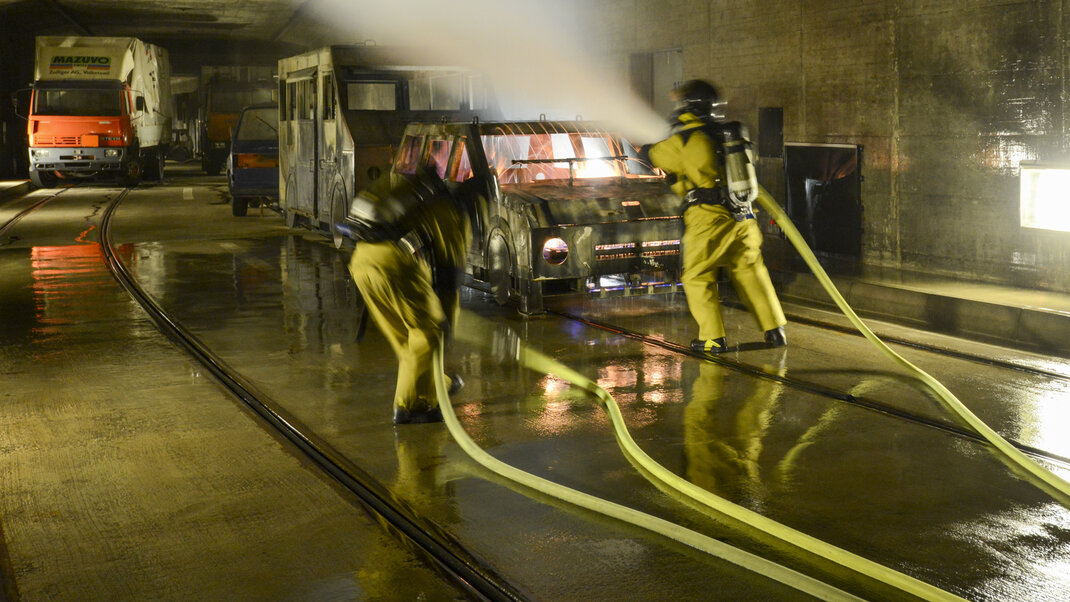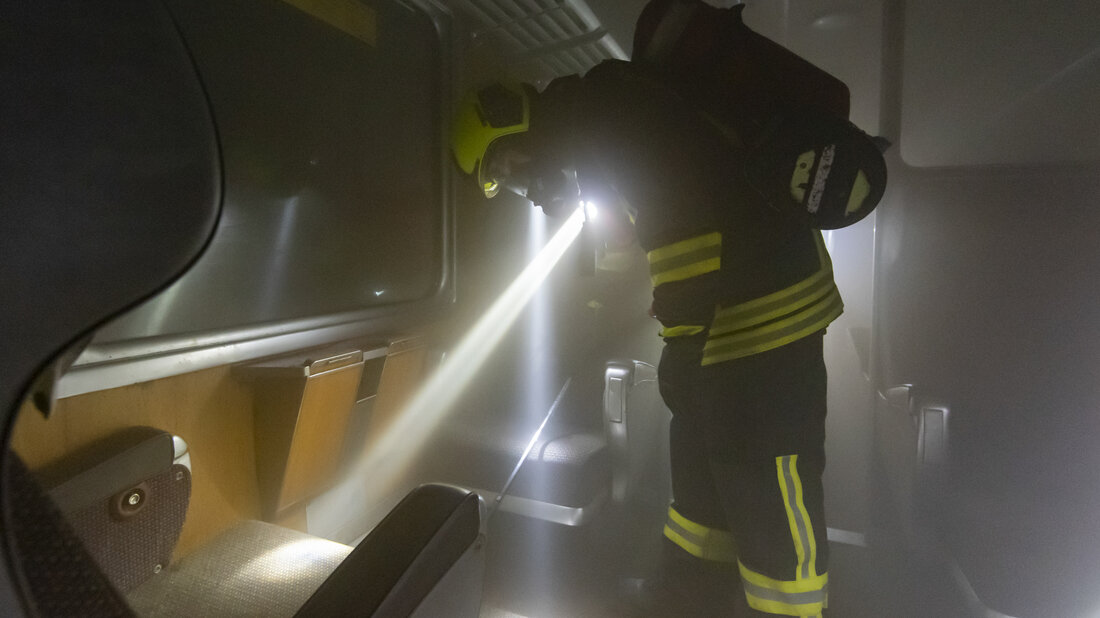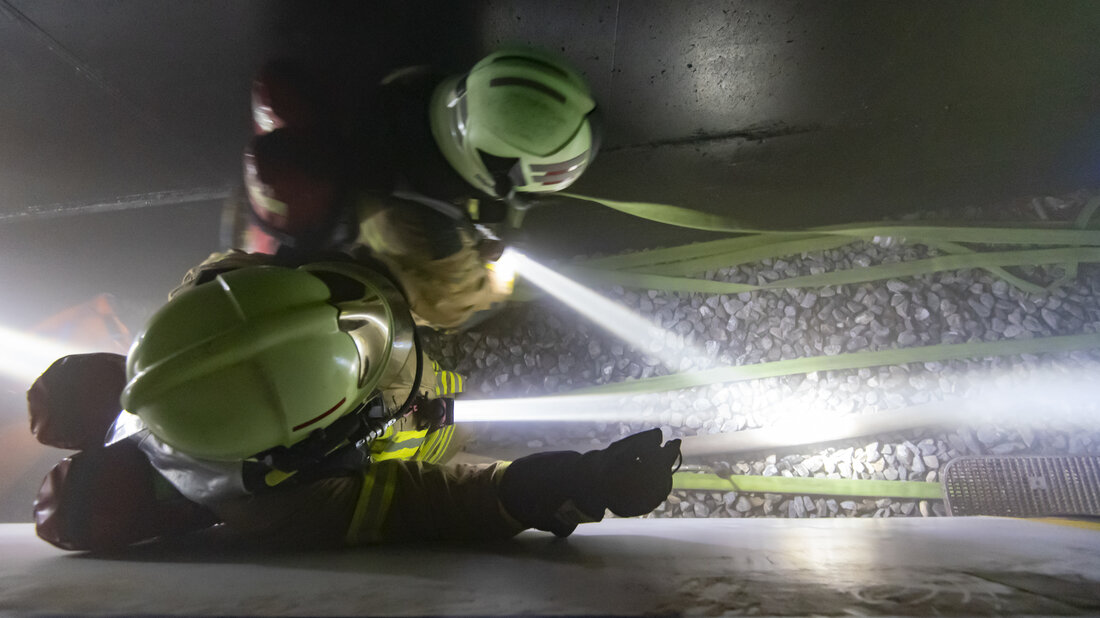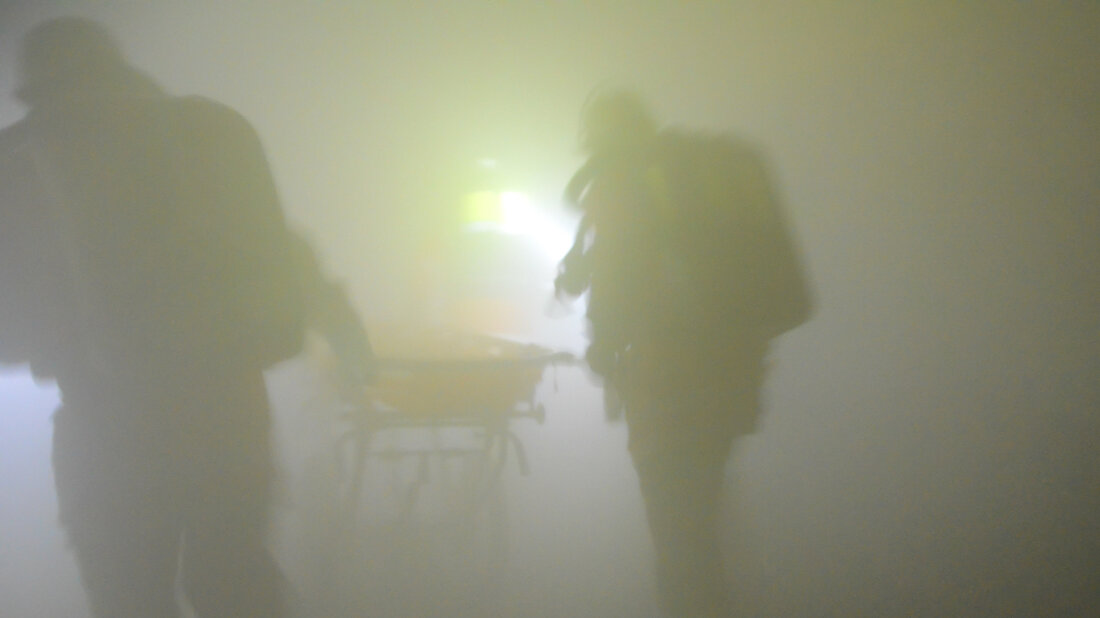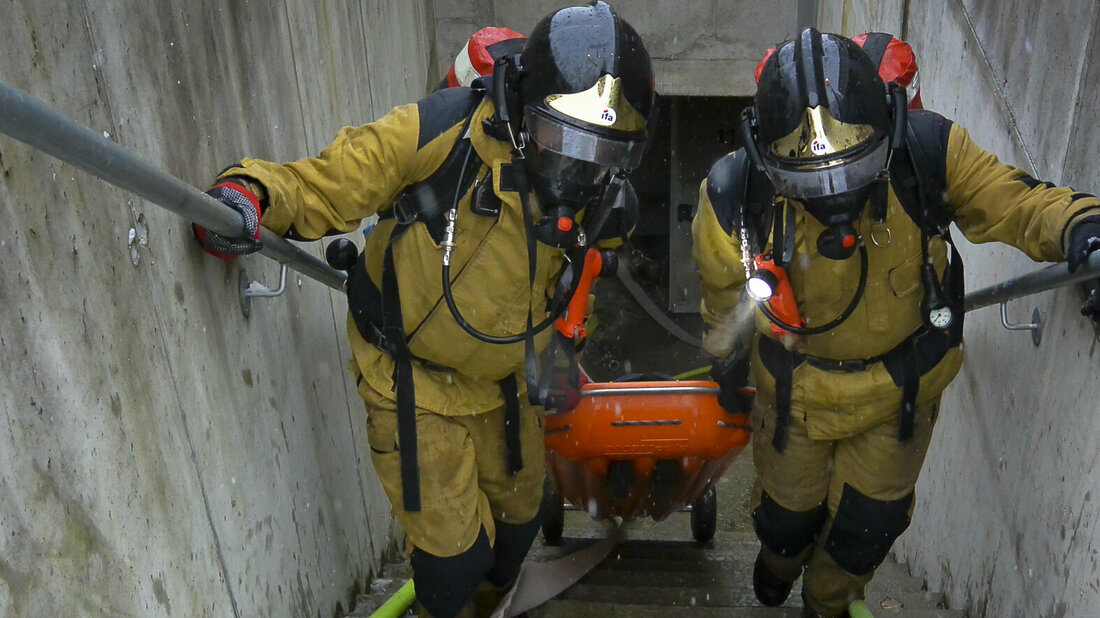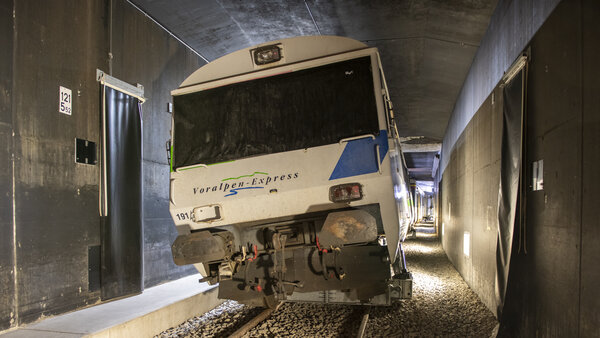Realistic - but without danger to life
When designing our training tunnels, the didactic and development team (DDT) had a seemingly unsolvable task: The operating conditions should be realistically reproduced – but without too much danger to the practitioners. This eliminated real vehicle fires. Because the smoke released in the process would be so toxic that even small mistakes of a breathing apparatus user could have fatal consequences.
The biggest challenge is the tunnel itself
The solution was found in conversations with those firefighters who had already gained experience with vehicle fires in tunnels: Not heat and smoke, they reported, but the big penetration depths are the biggest challenge. And on the upstream side of a fire, one can even stand upright, because it is less hot there than, for example, when extinguishing a fully developed room fire.
So this is what we learned: A training tunnel must primarily realistically reflect the facility conditions; e.g. the spatial dimensions, the possible arrangements of parallel tubes, safety tunnels, shelters, vertical and horizontal accesses. And it must be equipped with real road or rail vehicles in order to be able to practice search and rescue.
Real tunnel, simulated fire
The result of the many years of development work are our training tunnel facilities in Balsthal and Lungern, which correspond to the original tunnels in all operationally relevant details. Only unrealistic is the large number of emergency exits, which, however, allow a variety of different training scenarios and offer quick access to any part of the training tunnel facilities in case of emergency.
Simply put: Our tunnels are real tunnels; the vehicles in it are just as real. Only the fires are not quite as real. Because we are not burning vehicles, we are burning gas. Real, in turn again, are the flames. The heat load also corresponds nearly to the real operating conditions. But: no toxic smoke is produced. And in an emergency, these fires can be stopped at the touch of a button. There remains a single flaw: The training smoke is white because every black training smoke contains toxic substances. But even with this white training smoke, one of the most difficult operating conditions can be produced in real life: You do not see anything – or at least not enough.
We make it deliberately difficult
With a high level of technical effort, we produce as difficult operating conditions as possible in our training facilities in order to challenge the students. We deliberately put vehicles in their way. Or place the to be searched mannequins exactly where one would least suspect them, in order to motivate the students to work precisely.


